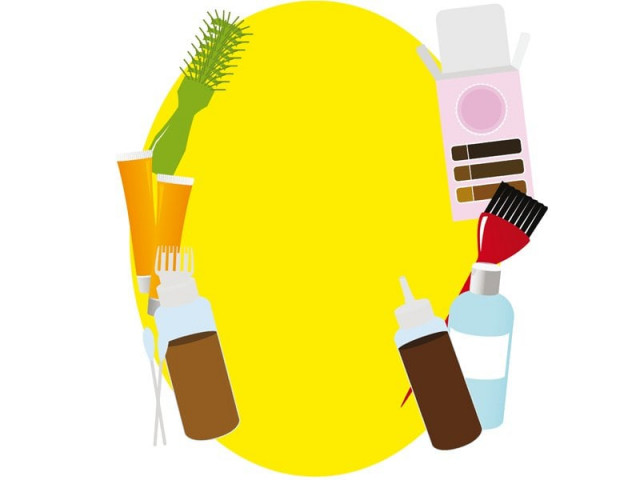Hair dyes: The colourful death call
Grey hair is socially unacceptable, but dying your hair can be life threatening.

There have been numerous cases in the past where women have fallen prey to the deadly toxins present in hair dyes. DESIGN: KIRAN SHAHID
This notion can be traced down to our culture in which age is considered unacceptable. This is the prime reason why women of all age groups have been lured into the practice of hair-dying.
“It is unfortunate that grey hair is deemed socially unacceptable in our culture, even for the slightly older women. And what is worse is that it may remain so forever,” says Dr Nosheeba Salman, a dermatologist, about the hegemonic societal pressures prevalent in our society. What’s important to note here is that everything comes with a price and so does beauty. But in this case, you might just end up giving your life away.
There have been numerous cases in the past where women have fallen prey to the deadly toxins present in hair dyes. P-Phenylenediamine, more popularly known as PPD, is one of the elements found in these boxes of colour, which have proven to be fatal.
What is PPD?
PPD is an organic compound found in practically all hair dyes. It fixes onto the hair permanently in order to give a more natural look. But what many people are unaware of is that PPD is also known as coal tar dye (petroleum), and is widely used in rubber chemicals, printing, photocopying, textile dyes and even gasoline. Scary thought? Because PPD is used in several harmful techniques, it comes as a surprise that the chemical is being overtly applied on humans, through hair dyes as well as dark-coloured make-up.
Skin specialist Najjia Ashraf reveals that there are barely any dyes that don’t contain this toxin; even the ones who claim they don’t, are not being honest. “Big brands often escape the blame by suggesting they are ammonia-free. However, ammonia and PPD are two very different things and PPD is present in nearly every dye because it is what gives off the colour,” she explains.
With an urge to win the race of innovation and differentiation, companies are increasingly using a variety of chemicals in their products — some without even testing. Dr Ashraf says the human body fights on numerous battlegrounds at once and is bound to lose the war on at least one — lack of immunity and allergic reactions, specifically.
What are the alternatives?
As fate might have it, the devil stands unbeatable. Despite continuous research, alternatives to PPD have not been discovered. But fortunately, there are a few ways to prevent allergic reactions and possibly death.
Redah Misbah, beauty expert at Depilex, stresses that the age-old technique of a patch test is the simplest way of preventing an allergic reaction, but even popular salons tend to ignore it. “You basically mix a drop of hydrogen peroxide and a very small amount of dye and apply it on a small patch at the back of the client’s ear,” she says, adding that the patch is then monitored for redness, inflammation and itchiness for 24 to 48 hours.
Another alternative is the use of henna. But the drawback is that henna does not offer a variety of colours. Instead, it gives a very deep orange colour which is deemed rather un-cool and tacky.
It is understandable how young women don’t want white or grey hair but the elderly should let nature takes its course. Marina Khan, Maheen Khan and Meryl Streep are perfect representations of how salt-and-pepper hair looks just as elegant as coloured hair. So next time you stop by the nearest store to pick up a box of hair dye, know that it might just be a little more than you bargained for.
Published in The Express Tribune, June 10th, 2013.
Like Life & Style on Facebook, follow @ETLifeandStyle on Twitter for the latest in fashion, gossip and entertainment.



















COMMENTS
Comments are moderated and generally will be posted if they are on-topic and not abusive.
For more information, please see our Comments FAQ